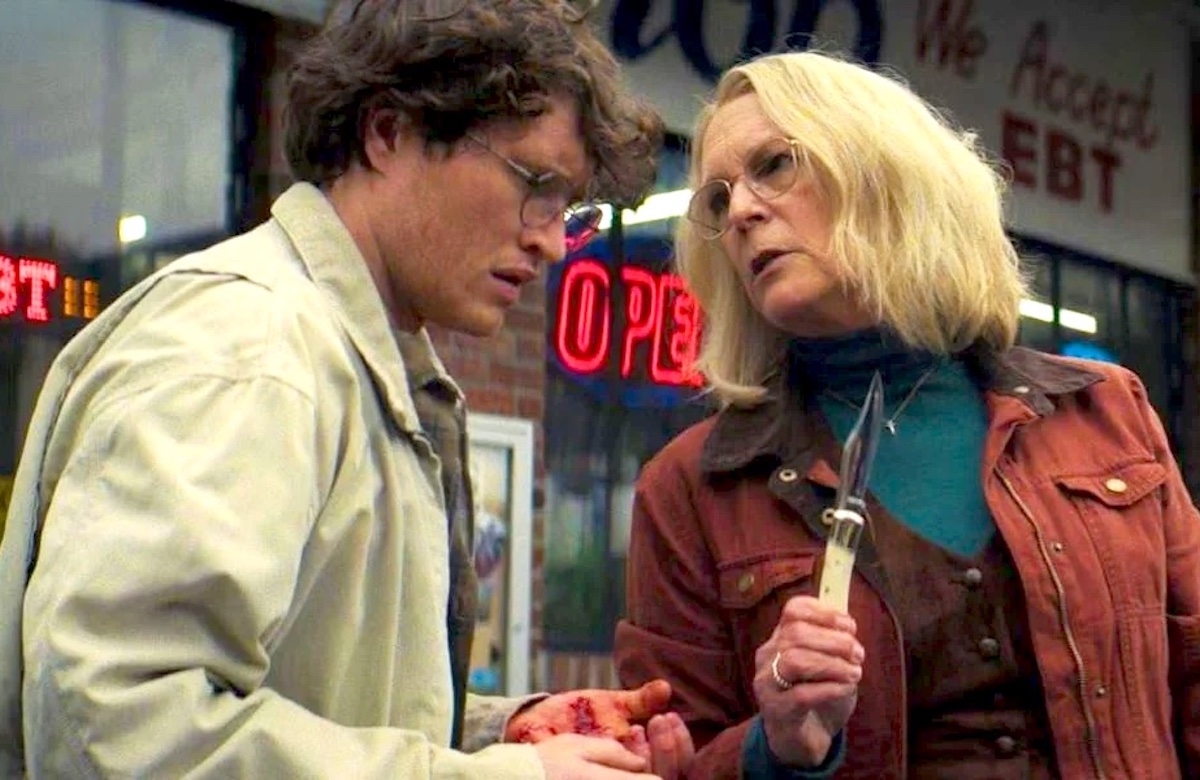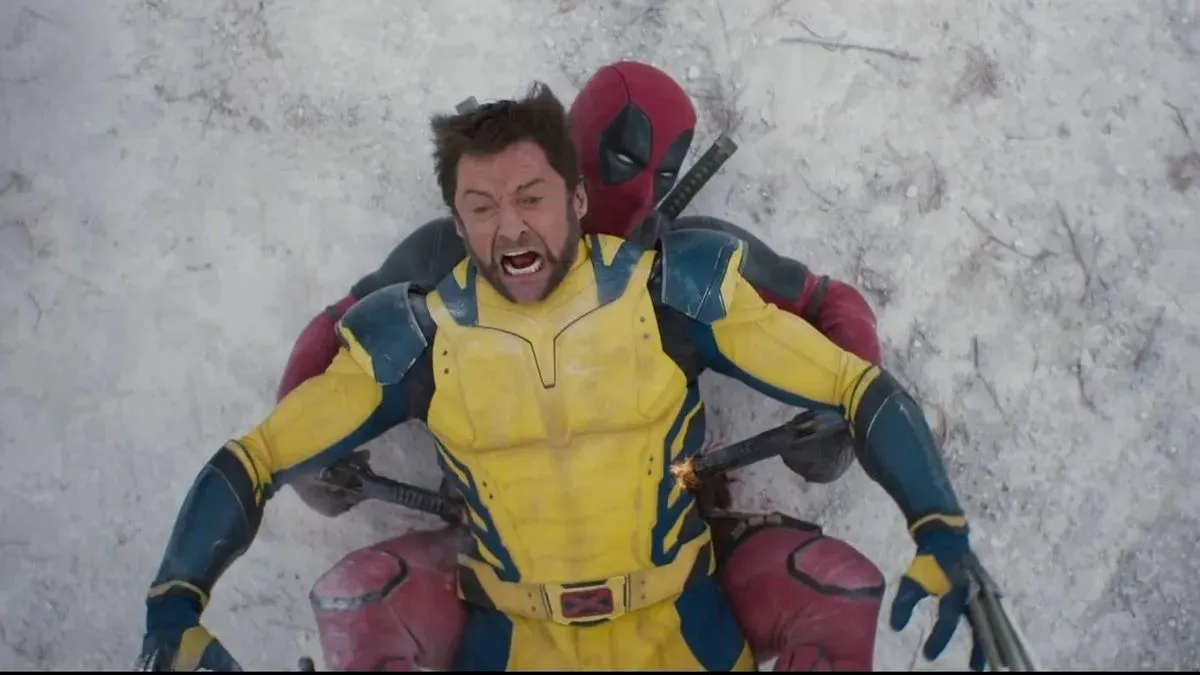Dating can be horrifying, and most women and some men are well aware of that. But is it possible that the over-saturation of bad boyfriends in horror is reductive and turning into a new cliché?
SPOILERS ahead for the majority of the Scream franchise, and the new Hellraiser and Halloween movies!
Three major horror franchises (Scream, Hellraiser, and Halloween) this year had twists involving bad boyfriends. Why now? Why is it almost entirely bad boyfriends?
Trust
We trust our partners with the most important parts of ourselves, our bodies, our hopes and fears, our secrets and insecurities. Relationships are basically investments of trust in a single person. And if you can never really know another person, can you really trust them not to hurt you?
The idea that our partners can be our worst enemies is a fact that an unfortunate number of people have to grapple with, and thus it’s a highly relatable topic to write about. It also makes for a twist to have the seemingly supportive spouse/boyfriend suddenly reveal their dark side.
Of course, the problem with this twist becoming such a cliché is that now we often don’t trust the love interest from the start. Dewey in Scream (2022) immediately pegs Ricky as one of the killers and warns Sam about the dangers of trusting him. Sam ignores his warnings, and Dewey is ultimately proven correct.
Contrast this with Scream 2, where Sidney briefly believes that her new boyfriend is one of the killers stalking her, only for his innocence to be proven when he is killed in front of her. She carries his Greek letters, and the guilt of his death, with her even into Scream 3. This twist is even better because he was one of the killers in the original script, but internet leaks forced them to change the killers’ identities, and personally, I think the movie was better for it.
Maybe we need more supportive boyfriends to counter the not-supportive ones. It makes the betrayal so much worse when you might really think the character is one of the good ones.
Easy catharsis
One of the best parts of horror is getting to see truly evil characters suffer horrible fates, and bad boyfriends are frequent providers of these easy endings.
Perhaps the most satisfying death in all of horror history is in The Invisible Man (2020), where Cecelia gets to kill her abusive boyfriend, Adrian, right when he thinks he’s gotten away with harassing her and that she’s coming back to him. Easy catharsis, solid payoff, and emotional resonance, all in a pretty little bow.
But the truth is, cutting out toxic relationships is not always easy and doesn’t always lead to positive change. There are some horror movies that challenge this “easy” catharsis; Midsommar’s ending has Dani trading in her emotionally neglectful, “cheating” boyfriend Christian for a literal murderous cult, and her smile at the end is intentionally unsettling for the implication.
References
A lot of these bad boyfriends are also references to other horror movies. Ricky in Scream (2022) is obviously a Billy Loomis wannabe, manipulating Sam and Tara much like Billy did to Sidney in the first Scream.
Trevor in Hellraiser (2022) may be a reference to Kirsty Cotton’s husband Trevor, who tried to get her to open the Lament Configuration and leave him her family fortune. Corey Cunningham in Halloween Ends is a reference to Arnie Cunningham in Christine, who was a nerd who slowly became a violent greaser as he got more and more entangled with his malevolent car.
Of course, the movies making these reference can make it harder for the work to stand on its own and also contributes to making the trope even more of a cliché, especially if it happens multiple times in the same franchise
Trevor and Ricky basically have the same twist of having intentionally seduced the main character for their plans, which doesn’t help, and Ricky admits to having based himself on Billy Loomis in order to seduce Sam Carpenter. Corey Cunningham is basically forced into the story as a new protagonist in the final movie of a trilogy (quadrilogy when including the 1978 Halloween), which undercuts all the other characters but especially the arc of his girlfriend, Allyson.
References can be fun, but they shouldn’t come at the cost of the characters, plot, or story.
Where are the bad girlfriends?
To be fair, there are some bad girlfriends in horror, too. Rose from Get Out is a truly chilling villain for just how easily she turns from a loving girlfriend and apparent ally to a literal hunter and a reminder of white women’s complicity in the racial hierarchy of America.
Jennifer’s Body can be equally interpreted as the toxicity in some teenage female friendships and as closeted queer love manifesting as jealousy. But it does feel more and more like the bad girlfriends in horror are few and far between.
It may partially be due to horror having more female protagonists. The Final Girl is perhaps the most widely expected and accepted female protagonist, and while she can push boundaries, she is still often a straight, white, conventionally attractive young woman. Of course, being a girl doesn’t mean the Final Girl can’t have a bad girlfriend (there was apparently a version of Scream (2022) that implied Amber and Tara were girlfriends at one point), and frankly, part of queer representation means acknowledging that not all queer love is healthy love.
So what can we do to make this better?
Having some displays of genuine healthy relationships with no twists might help with the cliché fatigue.
Alternatively, having more Bad Girlfriends (queer or otherwise) in horror can remind people that women can exhibit unhealthy relationship behaviors too. Just challenging the reference-heavy, easy catharsis of many clichéd bad horror boyfriends could go a long way to refreshing the trope.
(featured image: Universal Pictures)










Published: Oct 25, 2022 12:09 pm